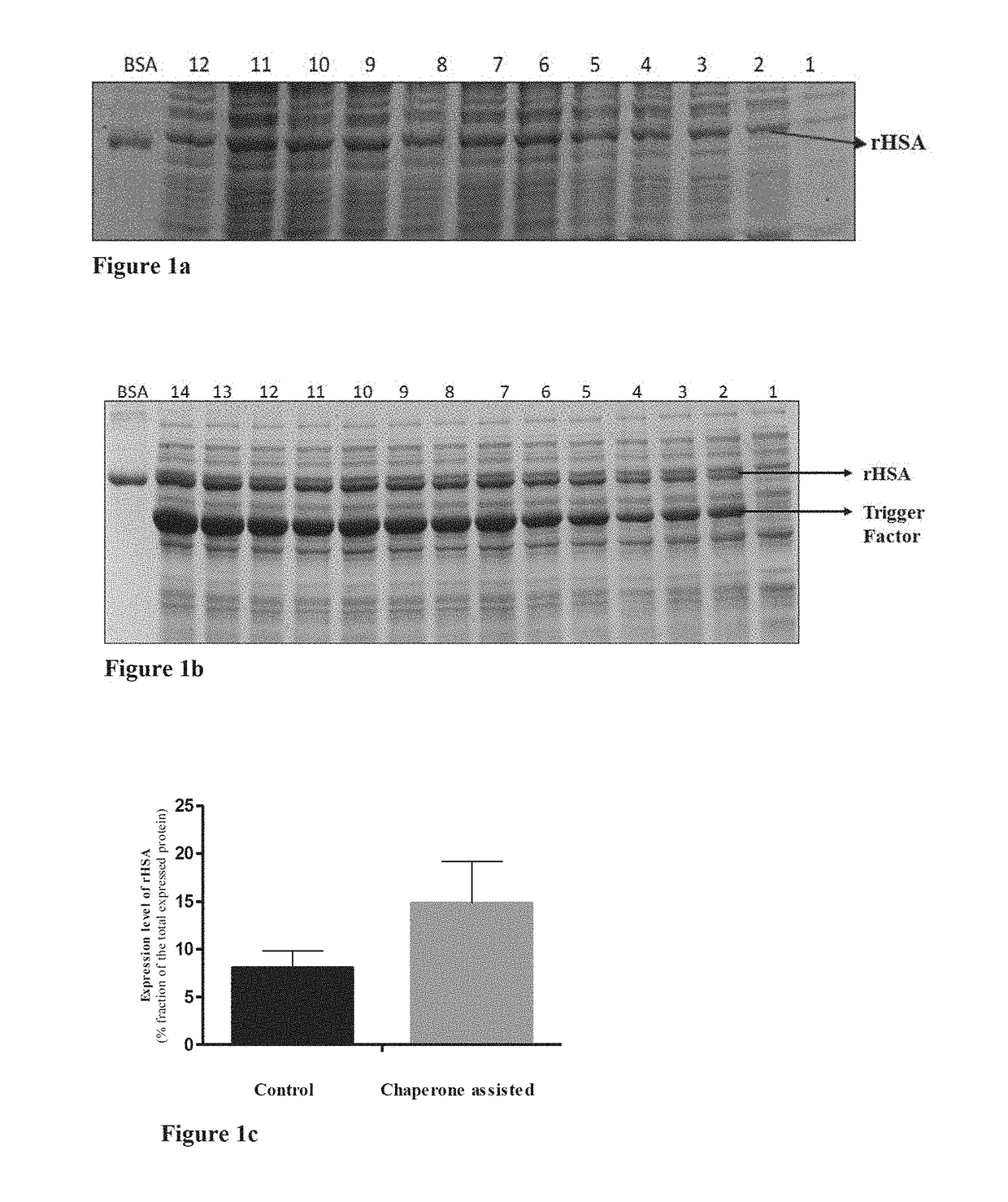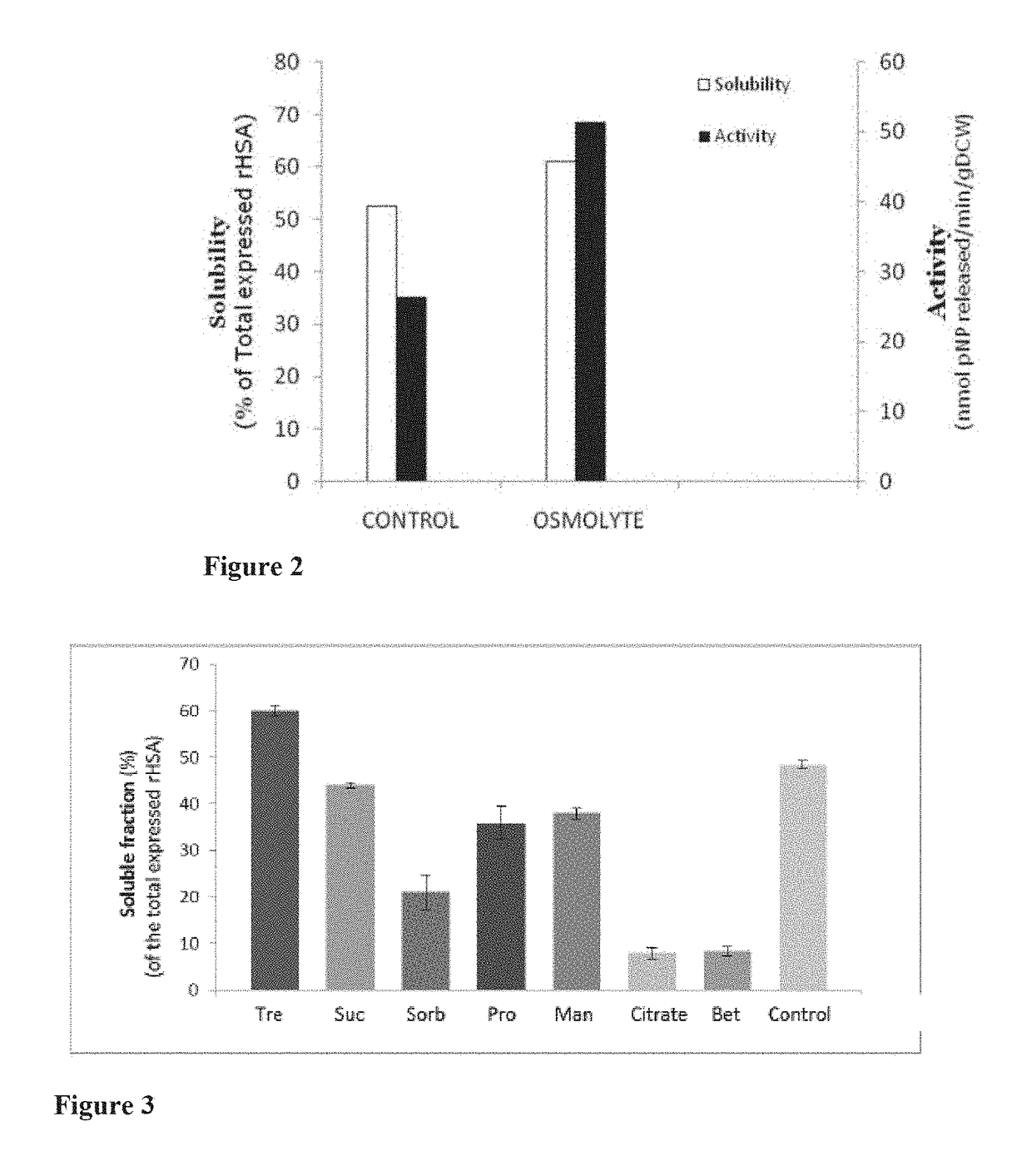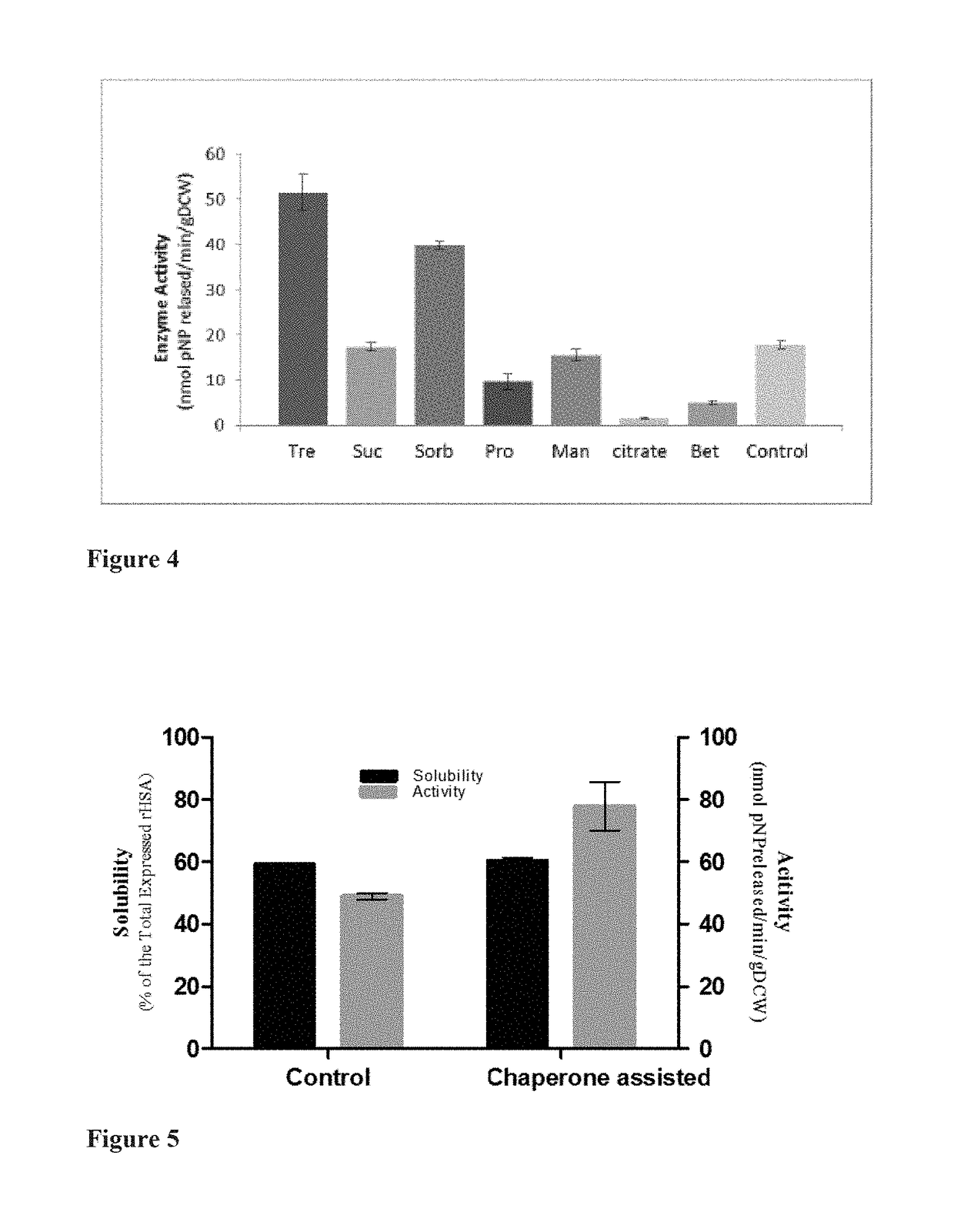Process for enhanced production of recombinant human serum albumin in e. coli through chaperone assistance
- Summary
- Abstract
- Description
- Claims
- Application Information
AI Technical Summary
Benefits of technology
Problems solved by technology
Method used
Image
Examples
example 1
Materials and Methods
[0066]Bacterial Strains and Plasmids:
[0067]The E. coli host strain selected for expression of recombinant proteins in the present invention was E. coli origami2 DE3 (Cat No: 70956 Novagen, Germany). The vectors used in the present invention were pETHSA and pTf16 (Cat no. 3340 Takara Bio Inc. Japan). The gene sequence coding for the human serum albumin (Gene ID: 213) was cloned into pET23b vector (Cat. No. 69746 Novagen, Germany) under the T7 lac promoter. The gene HSA (Gene ID: 213) was amplified from plasmid pGEMT-cDNAHSA (Cat No: HG10968-G Sinobiological Inc., China) by PCR flanked with restriction sites of the High Fidelity enzymes Nhe1-HF and Xho1 (Cat No.: R3131S and R0146S respectively, New England Biolabs, UK) included in the forward primer and the reverse primer (SEQ ID NO: 1 and SEQ ID NO: 2 respectively). The restriction site in the forward primer sequence is identified by GCTAGC, while the restriction site in the reverse primer sequence is identified ...
example 2
[0076]Cloning of Human Serum Albumin (HSA) Gene in E. coli Cells
[0077]Mature 1.8 kb long HSA gene was amplified from plasmid pGEMT-cDNAHSA using primers having sequence as set forth in SEQ ID NO: 1 (forward primer), and SEQ ID NO: 2 (reverse primer) respectively, which was used as the parental template for sub cloning into the pET23b vector. Gradient PCR was carried out between 50° C. to 60° C. to determine the optimal annealing temperature which was found to be at 55° C. Further, the insert (HSA gene) and vector (pET23b) were double digested with the restriction enzymes NheI-HF and XhoI enzymes at 37° C. for 2 hours. The digestion of the vector was confirmed using agarose gel electrophoresis; the double digested HSA gene insert and pET23b vector DNA were extracted from the agarose gel by using the gel extraction kit (Cat No: 28704, Qiagen, USA). The ligation was carried out with the digested vector pET23b and digested HSA insert in the presence of T4 ligase enzyme at 16° C. for 16-...
example 3
[0082]Extraction of Soluble and Functional rHSA Protein Using Osmolytes
[0083]Osmolytes directly impact the stability and solubility of proteins, and certain organic osmolytes also aid in protein folding and refolding and preventing protein aggregation. Thus, in order to reduce downstream losses, various osmolytes as part of the extraction process were tested.
[0084]Auto induced recombinant E. coli Origami2 were grown at 10-20° C., preferably 15-20° C., and harvested. The harvested cells were resuspended in lysis buffer pH 7.4 (20-100 mMTris, 200-500 mM NaCl, 2-20 mM MgCl2, 1-2 mM dithiothreitol, 5-20% glycerol, and 1-2 mM phenyl methanesulfonyl fluoride) comprising various osmolytes such as trehalose, sucrose, sorbitol, mannitol, sodium citrate, betaine, and L-proline at varying concentrations ranging from 0.1-1.0 M. The various lysis buffers comprising osmolytes were tested for optimal extraction of rHSA. The best osmolyte identified from the above experiments was trehalose at a con...
PUM
| Property | Measurement | Unit |
|---|---|---|
| Temperature | aaaaa | aaaaa |
| Temperature | aaaaa | aaaaa |
| Fraction | aaaaa | aaaaa |
Abstract
Description
Claims
Application Information
 Login to View More
Login to View More - R&D
- Intellectual Property
- Life Sciences
- Materials
- Tech Scout
- Unparalleled Data Quality
- Higher Quality Content
- 60% Fewer Hallucinations
Browse by: Latest US Patents, China's latest patents, Technical Efficacy Thesaurus, Application Domain, Technology Topic, Popular Technical Reports.
© 2025 PatSnap. All rights reserved.Legal|Privacy policy|Modern Slavery Act Transparency Statement|Sitemap|About US| Contact US: help@patsnap.com



